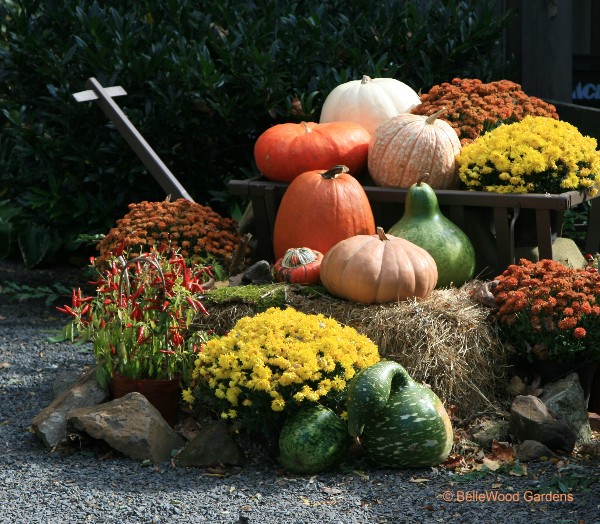
Wednesday, 22 October 2008
I love sharing gardens with friends, as I'm sure you do too. To visit a favorite garden is always a pleasure. To introduce a garden your friends have never been to, that's a real treat. So I've been suggesting that the Tohickon Garden Club schedule a trip to the Leonard J. Buck Garden in Far Hills, New Jersey for one of our meetings. And so it was that we were off on an autumn garden visit. It was, I believe, a first. Most garden visits are are scheduled for late spring or sometime in summer when flowers are lavishly in bloom. Autumn is often overlooked. All who came on this October outing truly enjoyed themselves. We carpooled over the Delaware River from Pennsylvania, and then went out to lunch afterwards. What fun!

A charming seasonal display of pumpkins and squashes and chrysanthemums,
a hot red pepper plant and a hay bale. Difficult to see but charming up close was a detail -
small gnarly pieces of tree roots, bare of bark, on a sheet of green moss with a couple of rocks.

We were divided into two groups, then taken on a tour of the grounds. From the visitors center
Buck Garden doesn't look that big. Start down the path and it just keeps unfolding before you,
with rock outcrops, Upper and Lower Pond, meadow areas, woodland trails, and bridges
to bring you from here to there and back again. Here we are on the boardwalk at the edge
of Lower Pond, our guide Lainie is in the lead. She gave us a spirited talk about
the geology of the area, Mr. Buck, and how he and Zenon Schreiber made the garden.
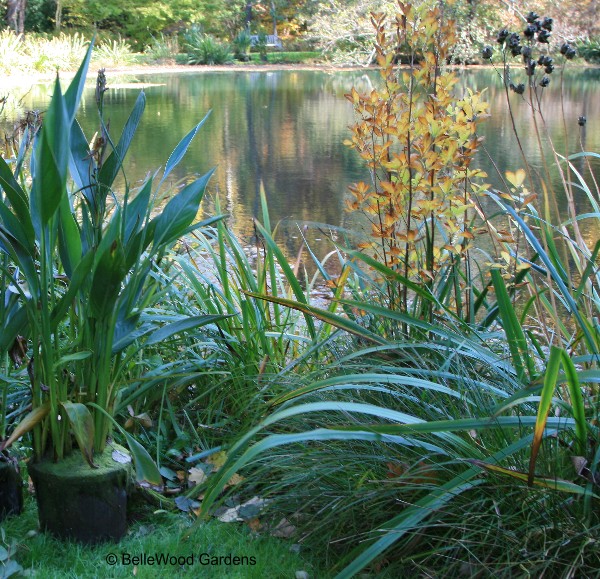
Autumn has its tasks, and bringing tender plants in for the winter is among them.
The Longwood Water cannas that embellished Lower Pond all summer
now need to find shelter. They've been lifted, pots and all, to drain
before moving indoors where they'll sleep away the cold weather.
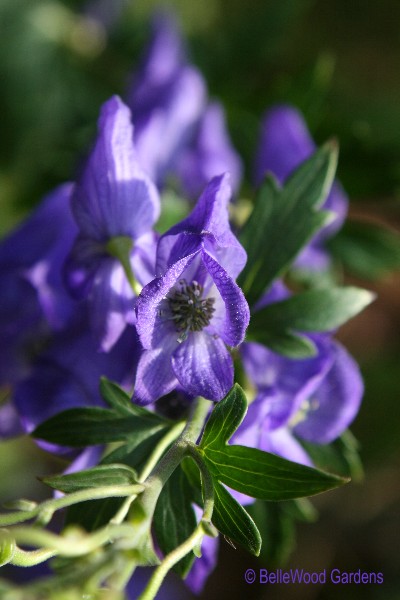
Fall is rich with color from the autumn leaves. Perhaps because flowers are few
we appreciate them all the more. Monk's-hood, Aconitum species, with its tall spikes
of deep blue-purple flowers would be welcome at any time of year. See the hood-like cap
atop the flower? Grow this even where deer are a problem. All the plant-eating critters
leave it well alone as it is quite poisonous. Plant in spring to establish before flowering.
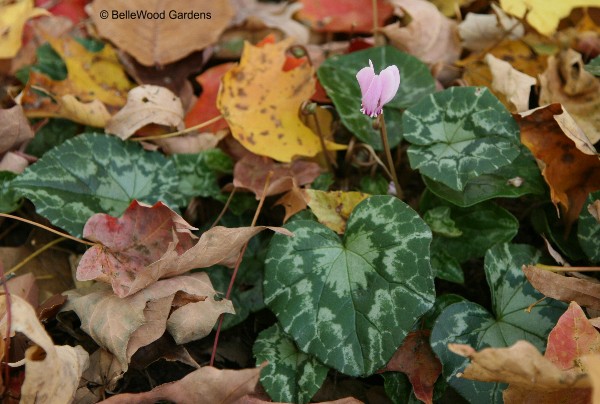
New this year is a trail zig-zagging up a steep hillside (there's a bench
part-way up where you can catch your breath if you need to, or just need to admire the view.)
It's named for Helen Buck. Up top, where a stone wall holds back the hill crest and serves
as backdrop to another couple of benches, is a planting of Cyclamen hederifolium,
the little fall flowering cyclamen. Flowers usually appear in August, with leaves coming
along in September. Their patterning of dark green and silver seems to vary from one
to the next. They'll stay evergreen through the winter, before going dormant in spring.

This one seems especially happy. Notice the little coiled watch-springs,
where pollinated flowers have wound themselves up as the seed ripens, to mature
next spring. I think it won't be very long before cyclamen carpet the ground up here.
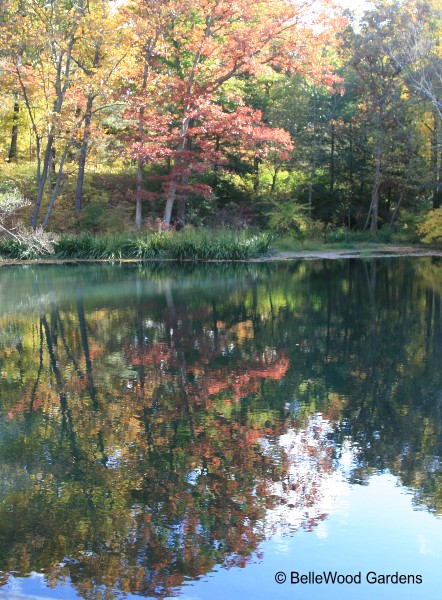
It was a sunny day but, as I'll freely admit, on the chilly side. Down in the meadow
it was somewhat sheltered. When the breeze would subside the water
of Upper Pond became a mirror for the rich red color of nearby trees.
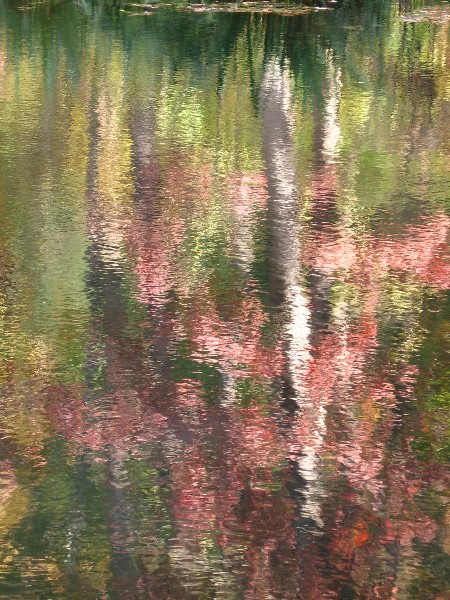
Image courtesy of Joan Carter, all rights reserved
And when the breeze again ruffled the water into cat's paw ripples
the reflection became an Impressionistic image suitable for framing.
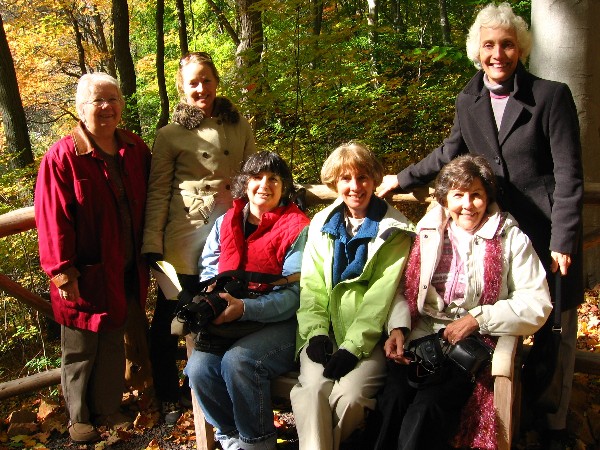
Image courtesy Lainie Beavin, all rights reserved
Partway up the zig-zag trail we stopped for a photo op. Don't we all
look happy! Any day is a good day for a garden visit, especially
when it is done in the company of friends.